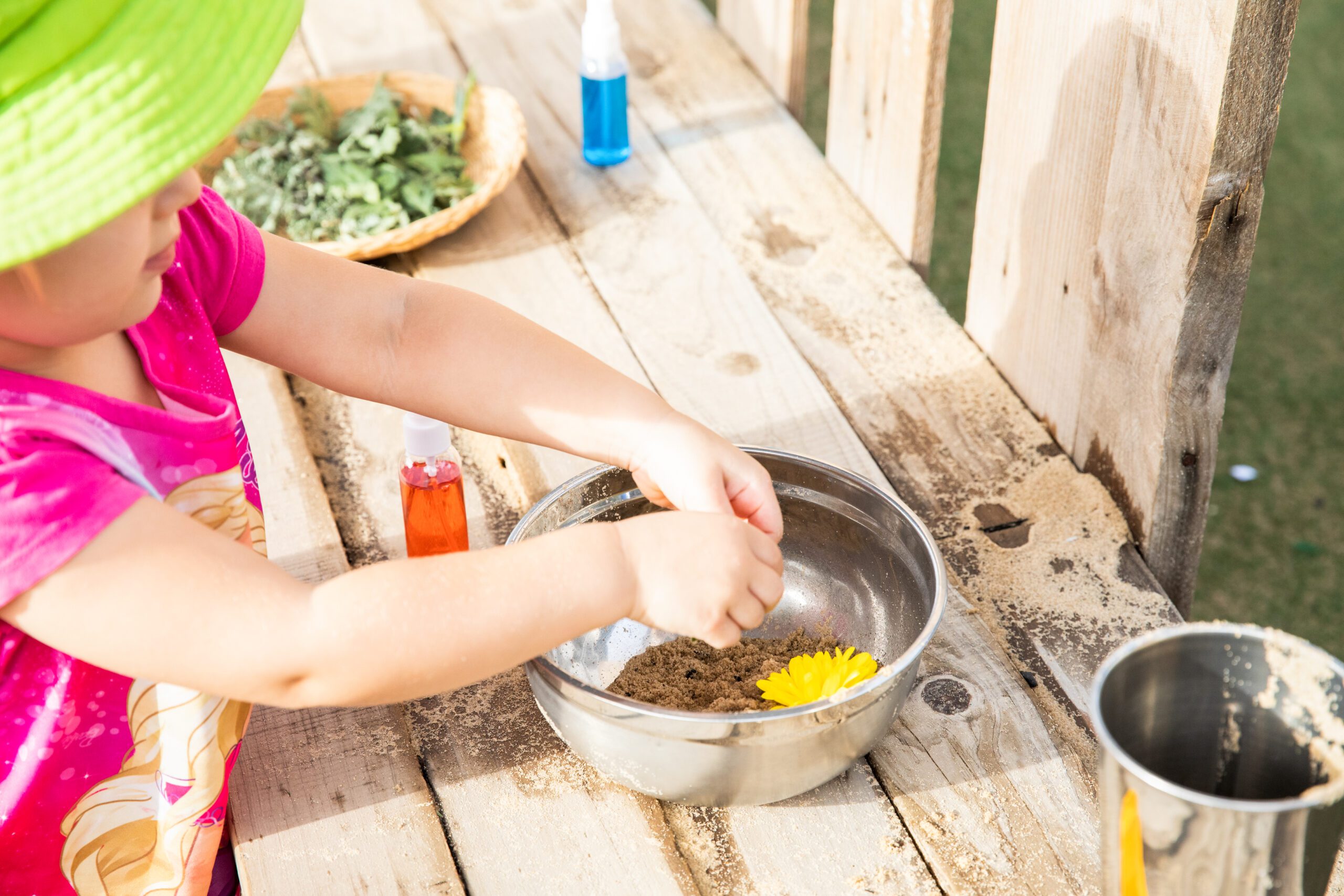
If you’ve ever looked around your home and thought, “We have so many toys, but nothing’s getting played with properly,” you’re not alone.
The good news? You don’t need a toy catalogue or a perfectly curated playroom to create a space that helps your child learn, focus and grow. With just a little thought (and maybe a tidy-up), you can create a play nook that feels inviting, calming and purposeful, without spending a fortune.
At Aussie Kindies, we believe play is where the best learning happens. It’s how children make sense of the world, solve problems, build relationships and express themselves. And the kind of learning we see every day in our centres? You can encourage that same magic at home, with everyday items and a little help from the experts.
Why Play-Based Learning Works (Even in a Laundry-Filled Living Room)
It’s easy to think of play as a way to keep kids busy, but it’s so much more than that.
As Johann Hari explains in Stolen Focus, deep play helps kids develop focus, creativity and emotional regulation - things we’re all craving more of in today’s world. And research from the Harvard Centre on the Developing Child shows that play supports healthy brain development, strong language skills, and long-term academic success.
That’s why our Lifelong Learning Curriculum is built around play, not just because it’s fun, but because it works. And with a few small changes, you can bring that same learning home.
Step 1: Start with a Corner
You don’t need a whole room, just a corner of your lounge, a spot in the hallway, or even a nook in their bedroom.
Choose somewhere that:
- Has natural light (if you can)
- Feels calm and not too cluttered
- Can be marked off with a small rug, a floor cushion or a low shelf
Even a laundry basket filled with a few chosen toys or books can become a special space. The goal isn’t perfection, it’s purpose.
Step 2: Use Learning Zones (Just Like We Do at Aussie Kindies)
Our centres are set up with learning zones that support different areas of development. Here’s how you can recreate a few of them at home, with simple things you probably already have.
Book Nook – Language and Focus
Create a cosy space with just a few books and a soft cushion or blanket.
- Toddlers (1–3 years): Board books, lift-the-flap stories, animal sounds. Keep it simple and sensory.
- Kindergarteners/Preschoolers (3–5 years): Picture books, alphabet stories, early nonfiction. Ask, “What do you think will happen next?”
Swap out books every week or so to keep things interesting.
Construction Zone – STEM and Problem-Solving
Grab some blocks, boxes, or recycled materials for building.
- Toddlers: Stacking cups, Duplo, wooden blocks. Help them build up and knock down!
- Kindergarteners/Preschoolers: Add recycled items like cardboard tubes or bottle tops and challenge them to build something tall or strong.
Don’t be afraid of “junk”! A cereal box can be a skyscraper in the right hands.
Imagination Station – Creativity and Emotional Growth
Give them space to pretend, dress up and act out stories.
- Toddlers: Toy phone, a hat or scarf, baby doll.
- Kindergarteners/Preschoolers: Dress-ups, toy food, puppets or props for pretend play.
Join in sometimes - let them “cook” you lunch or give you a check-up!
Little Artists Corner – Fine Motor and Self-Expression
Set up a tray or box with materials they can use independently.
- Toddlers: Playdough, chunky crayons, dot stickers.
- Kindergarteners/Preschoolers: Safety scissors, glue, recycled paper, and prompts like “Can you draw your house?”
Keep the mess manageable with a drop sheet or a washable tablecloth.
Discovery Zone – Curiosity and Inquiry
Use nature and sensory play to spark big thinking.
- Toddlers: Water tubs, rice bins, scoops and funnels.
- Preschoolers: Leaves, feathers, a magnifying glass, sorting trays.
Take a walk together and collect treasures to bring back to their space.
Completely Connected – Belonging and Identity
Help your child feel proud of who they are and where they come from.
- All ages: Family photos, special drawings, cultural items, comfort toys.
Ask, “What makes you feel happy?” and include it in their nook.
Step 3: Keep It Easy (and Cheap)
This doesn’t have to cost a thing. In fact, simple setups are often better.
- Reuse what you have: pillows, baskets, cardboard boxes.
- Check op shops or toy libraries for hidden gems.
- Rotate toys and materials instead of adding more.
Start small and see what your child connects with, then build from there.
Step 4: Follow Their Lead
Children don’t need a perfect setup, they need time, space, and the freedom to explore. Let your child move in and out of the space as they choose. You’ll notice them developing deeper focus, longer play sessions, and greater independence.
Even 10–15 minutes of play in a space that feels like “theirs” can make a huge difference.
Want to See What This Looks Like in a Real Learning Environment?
At Aussie Kindies, our educators create beautiful learning spaces every day - ones that spark imagination, calm little minds, and help children grow in confidence.
Find a centre near you and come take a look. We’d love to show you how we bring play-based learning to life through our Lifelong Learning Curriculum.
Because even the smallest space, when it’s filled with love and purpose, can lead to big learning.